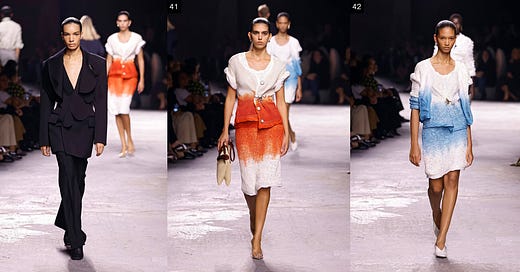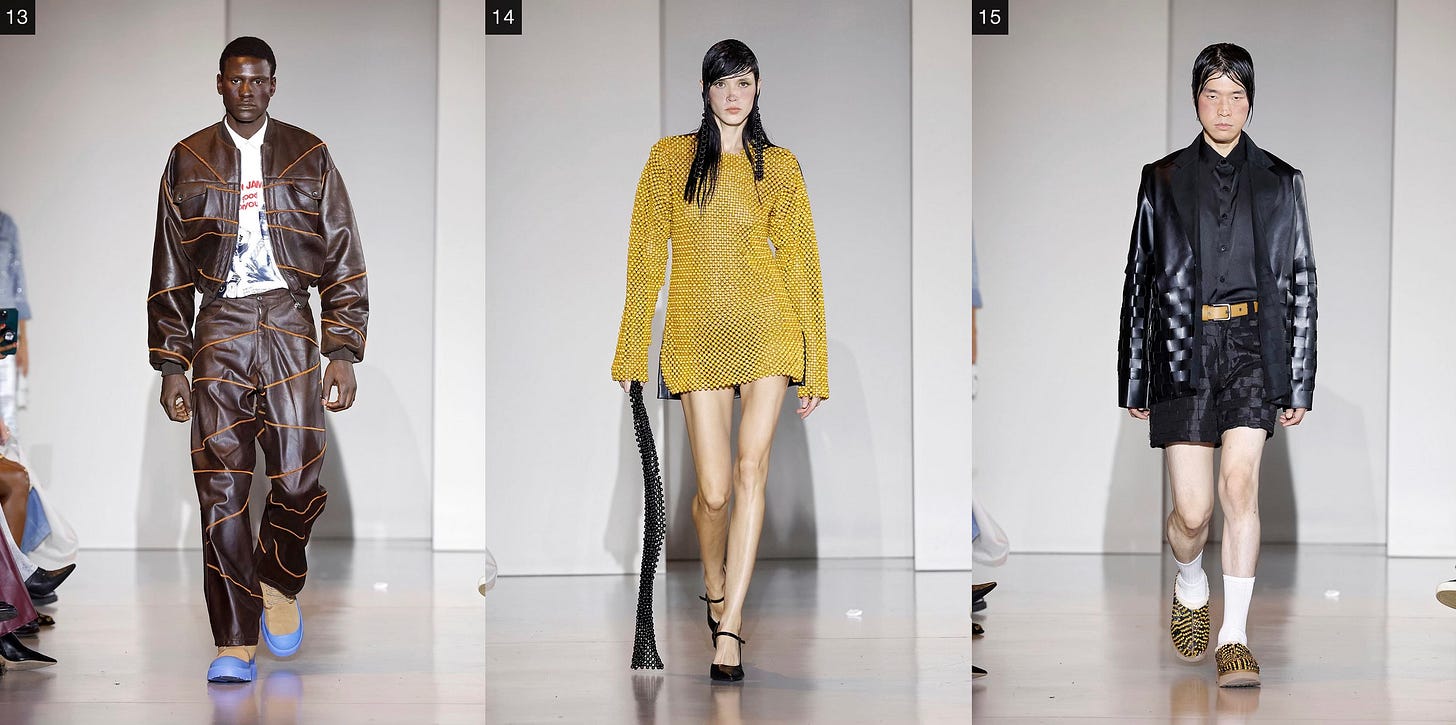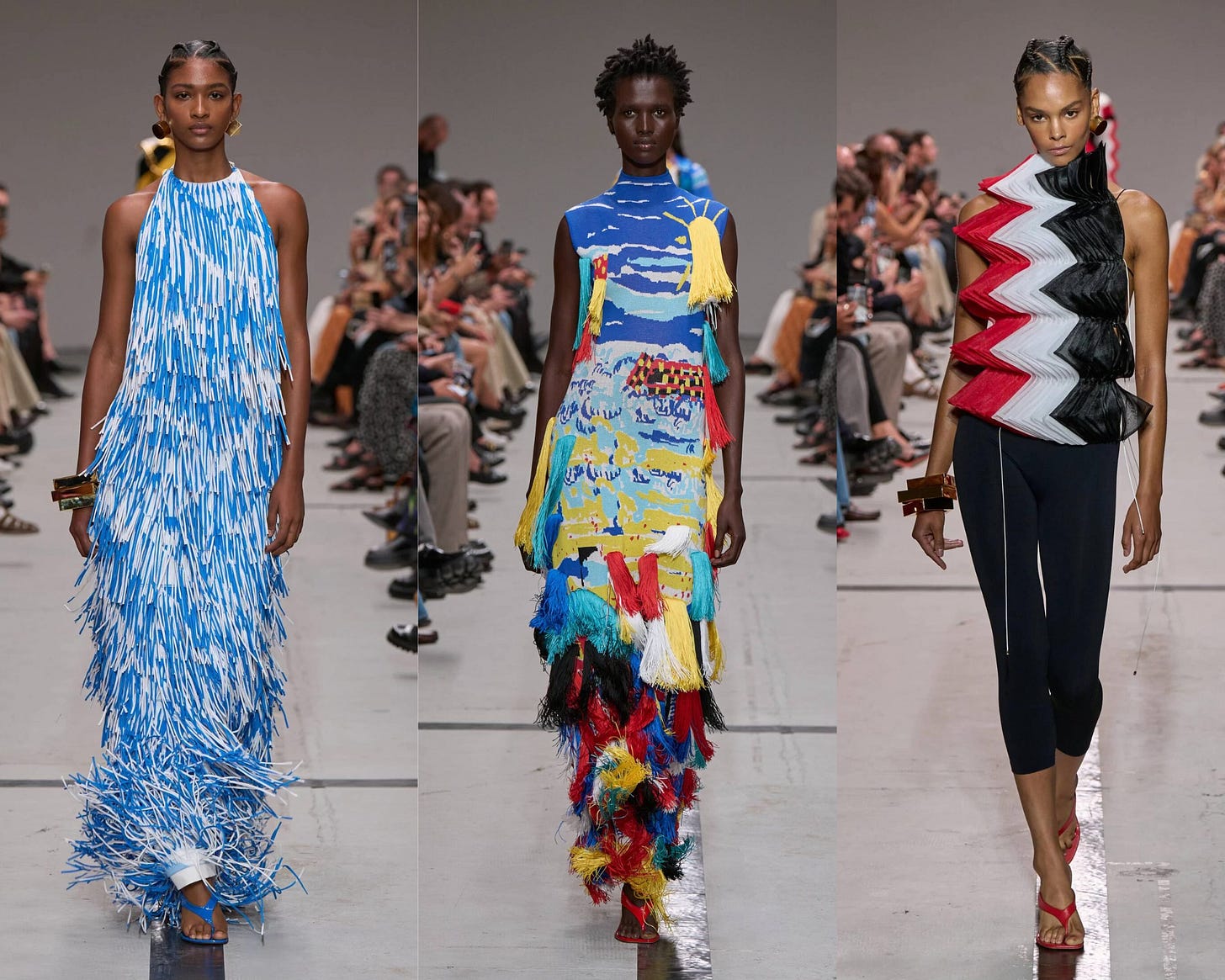My September has turned out to be busier than I thought but as promised here it goes. My thoughts on the SS25 season so far!
About two years ago I was shortlisted for an editor and trend-forecasting position at WGSN in London. During the interview process, I was asked to create a Design Capsule, forecasting current and future trends. I based my report partly on the future of fashion and textile innovation and the rise of alternative, forward-facing materials.
Come 2024 and it feels like that’s exactly where the industry is.
Selling craftsmanship
Craft to drive seemingly traditional collections has become the selling and marketing card for both new brands and heritage fashion houses alike. From Bottega Veneta to Tokyo James, the London-based Nigerian designer, brands show how far and wide they can stretch their creativity and craftsmanship.
Craftwork is nothing new in fashion but the way it’s presented these days is not only for style or to celebrate heritage but to go viral too! Alongside showcasing their workmanship, brands are also low-key using this strategy to create buzz and attention around their collections and products.
In an industry where designers are compelled to compete for attention and relevance, showcasing a unique or “fresh” take on an old technique is the perfect formula for a viral moment in 2024. Think about the allure and excitement of publicly and collectively discovering that a pair of trousers that seemingly looks like denim is fine leather or how a deceptively sequin-looking dress is made from a special metallic hide.
Connecting people with craft.
This SS25 season brands continue to offer bold crafty pieces that exude both workmanship and sometimes drama. Tokyo James's collection explores the “beauty that can be found in imperfections”. The designer juxtaposed different fabrics and finishes to create one of his best collections so far. I’m talking about fully beaded dresses in flattering shapes and spliced, woven pieces like denim shorts and coats. Tokyo James sought to reinterpret what luxury can feel and look like by focusing on what he described as raw, unpolished materials that are traditionally rooted in African cultures but often overlooked by Western high fashion standards.
Missoni was another brand that captured my attention after a long time. Their collection is an artisanal delight with lively zig-zag patterns and exaggerated proportions. Garments came in three-dimensional forms, bursting with life and colour. Every single look was a statement piece ready to turn heads.
At Bottega Veneta, Matthieu Blazy continues to explore “craft in motion”. This time driven by childlike references and the different stages of dressing up from childhood to adulthood. Blazy’s collection was realised through oversized silhouettes, whimsical patterns and textures, and crinkled pieces which I also noticed at Ferragamo. Is creased clothing the next big luxury fashion trend? It might be! This collection however had its moments.
I find it interesting that when an African designer presents a raffia dress for example it's deemed unwearable and maybe even impractical but if a similar look comes from a Western brand it's considered genius and the highest form of workmanship. Fashion’s hypocrisy even within the African creatives and consumer context never ceases to amaze me.
Thanks for reading this edition of Africa Fashion Decoded.
— Innocent
Some light but insightful fashion week reading: (first one is by me)
Feben SS25 Collection: A designers ode to resilience
The next chapter of Dries van Noten looks very bright indeed





